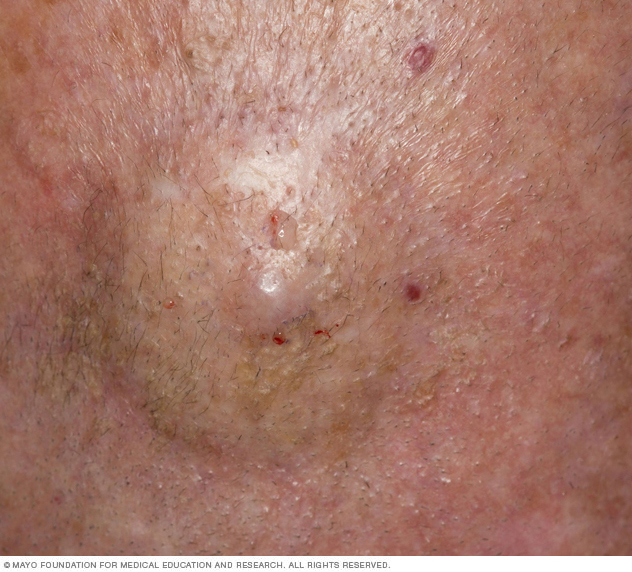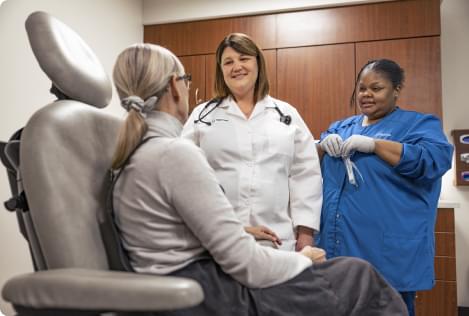Overview
Cutaneous B-cell lymphoma is a rare type of cancer that begins in the white blood cells. This cancer attacks the skin. Cutaneous B-cell lymphoma starts in one type of germ-fighting white blood cell called B cells. These cells are also called B lymphocytes.
The types of cutaneous B-cell lymphoma include:
- Primary cutaneous follicle center lymphoma
- Primary cutaneous marginal zone B-cell lymphoma
- Primary cutaneous diffuse large B-cell lymphoma, leg type
- Intravascular diffuse large B-cell lymphoma
Cutaneous B-cell lymphoma symptoms include a firm bump under the skin. The bump might be the same color as your skin. Or it might be a darker color or look pink or purple.
Cutaneous B-cell lymphoma is a type of non-Hodgkin's lymphoma.

Diagnosis
Tests and procedures used to diagnose cutaneous B-cell lymphoma include:
- Physical exam. Your health care provider will carefully check your skin. Your provider looks for other signs that may give clues about your diagnosis, such as swollen lymph nodes.
- Skin biopsy. Your provider may remove a small part of the skin lesion. The sample is tested in a lab to look for lymphoma cells.
- Blood tests. A sample of your blood may be analyzed to look for lymphoma cells.
- Bone marrow biopsy. A sample of your bone marrow may be tested to look for lymphoma cells.
- Imaging tests. Imaging tests may help your provider assess your condition. Examples of imaging tests include computerized tomography (CT) and positron emission tomography (PET).
Treatment
Cutaneous B-cell lymphoma treatment depends on the specific type of lymphoma that you have.
Treatment options may include:
- Radiation therapy. Radiation therapy uses powerful energy beams to kill cancer cells. Energy sources used during radiation include X-rays and protons. Radiation therapy can be used alone to treat cutaneous lymphoma. Sometimes it's used after surgery to kill any cancer cells that might be left.
- Surgery to remove the cancer. Your health care provider may recommend a procedure to remove the cancer and some of the healthy tissue that surrounds it. This might be an option if you have one or only a few areas of cutaneous lymphoma. Surgery might be the only treatment needed. Sometimes other treatments are needed after surgery.
- Injecting medicine into the cancer. Sometimes medicine can be injected into the cancer. One example is steroid drugs. This treatment is sometimes used for cutaneous lymphoma that grows very slowly.
- Chemotherapy. Chemotherapy is a drug treatment that uses chemicals to kill cancer cells. Chemotherapy drugs can be applied to the skin to control cutaneous lymphoma. Chemotherapy can also be given through a vein. This might be used if the cancer is growing quickly or is advanced.
- Targeted drug therapy. Targeted therapy drugs attack specific chemicals present in cancer cells. By blocking these chemicals, targeted drug treatments cause cancer cells to die. Targeted therapy drugs can be injected into the cancer to treat cutaneous lymphoma. Or the drugs can be administered through a vein.
© 1998-2024 Mayo Foundation for Medical Education and Research (MFMER). All rights reserved. Terms of Use


